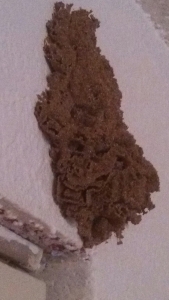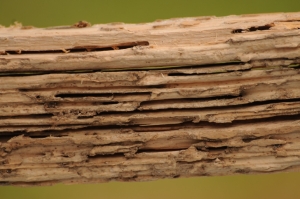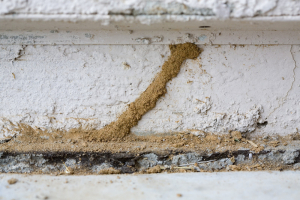The cause of roughly $5,000,000,000 in property damage annually, termites are a major threat to homes and commercial structures as they silently eat their way through wood, flooring, and any other products containing cellulose (wallpaper, paper exterior of drywall are prime examples) along the way. A great deal of this damage comes from subterranean termites.
One of the main problems homeowners face in the battle against termites is discovering the infestation in the first place. A vast majority of the time homeowners find an infestation after the colony is well established and causing damage. Home remodeling projects are prime times to discover termite activity. Removal of drywall, flooring, cabinets, and tile often reveals termite damage in homes that are infested. In addition, water leaks and burst pipes provide moisture for termite colonies encouraging their destruction. However, there are signs other than actual termite damage that serve as indicators of termite activity.
In the event that you encounter the following signs at your home it is important to consult a termite professional for diagnosis and treatment for a possible termite infestation:

- Shelter tubes (aka mud tubes) – Approximately the width of a pencil, a mud tube is essentially a subterranean termite highway. The tubes provide protection from the open air and from predatory ants. Shelter tubes are frequently found trailing from the ground up the side of the foundation or coming through expansion joints or cracks in the foundation, although they can be found anywhere within a home that has an infestation.
- Swarmers – The reproductive stage of termites is often referred to as a swarmer. This name comes from the large numbers of termite alate (reproductive termites) that emerge from the colony and take flight in search of a new suitable nest site. These winged termites often appear suddenly and may disappear just as suddenly, sometimes leaving only a pile of shed wings behind as evidence of their presence. Termite swarmers are frequently mistaken for ant swarmers.
- Peeling paint or bubbling – Paint will often begin to bubble or peel due to termite activity in the drywall or wood behind the paint. Small pinpoint holes may also be found in paint when termite activity is present.
- Deteriorating, crumbling or bowing drywall – Often associated with water leaks or burst pipes can also indicate termite problems within the wall. Termites thrive in areas where moisture is present and their feeding habits can result in the weakening of support beams and the drywall itself.
- Boards or door/window framing that sounds hollow – Termites eat wood from the inside out. Therefore, boards that have interior damage may not always show outward signs of infestation; however, they will sound hollow or even crumble when taped on with the handle of a screwdriver.

